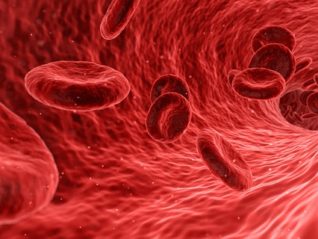
by Bianca Garilli, ND
Magnesium is the 4th most abundant mineral in the human body following calcium, sodium, and potassium. Intracellularly, magnesium is the 2nd most abundant cation behind only potassium.1 The number of essential roles magnesium plays in the body is extraordinary, with over 300 enzymes requiring magnesium as a co-factor for proper functioning.1
This essential element is involved in numerous critical physiological processes such as energy production (ATP metabolism, oxidative phosphorylation, and glycolysis), protein synthesis, muscle contraction, nerve function, blood glucose control, hormone receptor binding, blood pressure regulation, transmembrane ion flux, gating of calcium channels, cardiac excitability, and synthesis of nucleic acids (RNA and DNA).1
Unfortunately, magnesium is one of the most prevalent nutrient gaps in the US. The 2015 Dietary Guidelines Advisory Committee noted a substandard intake of magnesium as compared to the Estimated Average Requirement (EAR), which is the Dietary Reference Intake (DRI) used to assess population sufficiency vs. insufficiency for nutrients.2-3 A 2016 publication in Advanced Nutrition concluded, “Approximately 50% of Americans consume less than the EAR for magnesium, and some age groups consume substantially less”.4 This is especially concerning when one considers the critical implications of long-term, frequently unrecognized magnesium deficiencies.
Deficiencies in magnesium can present with overt clinical manifestations such as nausea, vomiting, lethargy, weakness, personality changes, tetany and tremor, seizures, arrhythmias, and muscle fasciculations.5 In other cases, subclinical deficiencies may be more difficult to recognize yet have equally serious effects if left untreated. Health concerns and disease processes resulting from an underlying, subclinical magnesium deficiency may contribute to low bone mineral density and cardiometabolic implications such as metabolic syndrome, hypertension, arrhythmias, arterial calcifications, atherosclerosis, heart failure, and increased risk for thrombosis.6
A subclinical magnesium deficiency can also disrupt sleep and cause muscle cramping, two common symptoms often glossed over but which can be signs of a bigger problem if left untreated. The impact of magnesium on these two clinical manifestations will be explored further:
Magnesium and sleep
A double-blind randomized clinical trial composed of 43 elderly participants between 60-75 years of age with diagnosed insomnia was conducted.7 The experimental group was given 500 mg/day of elemental magnesium for 8 weeks (250 mg elemental magnesium from 414 mg of Mg oxide, twice daily), while the control group received a placebo for the same length of time.7 A statistically significant increase was seen in sleep time, sleep efficiency, and concentration of serum renin and melatonin, as well as a significant decrease in insomnia severity index (ISI) score, sleep onset latency, and serum cortisol level.7
For many individuals, sleep is disrupted by restless leg syndrome (RLS) or periodic limb movements (PLMS).8 A study supplementing 12.4mmol of oral magnesium in the evenings for 4-6 weeks found that the overall sleep efficiency improved from 75 to 85%.9 The Mg-supplemented group also experienced a significant reduction in PLMS associated with arousals (7 PLMS/hr vs. 17 PLMS/hr at baseline).9
Magnesium and muscle cramps
Muscle cramping is a common occurrence among women during pregnancy, in athletes, and in the elderly, for which magnesium is often recommended.10 There are only a few studies, however, that have reviewed the efficacy of magnesium for muscle cramping.10 In a Cochrane review, 7 trials (5 parallel, 2 cross-over design) were included, with 3 of these trials studying pregnancy-associated leg cramps in 202 females and 4 trials looking at idiopathic leg cramps in 322 participants.10 Results from the studies noted no significant improvement of muscle cramping in older adults, while results in pregnancy were mixed leading the authors to recommend further studies in this population.10 The authors of a review article in Scientifica note that the mixed findings may be explained by the potential that, “deficiencies of other elemental nutrients including calcium and potassium have also been implicated in muscle cramps and spasms. It may be that magnesium is potentially helpful in situations of magnesium deficiency but is not of use if the problem is related to deficiency of another nutrient.”1
Magnesium: Daily needs and sources
Magnesium is an essential macromineral required by the human body. The prevalence of deficiency from serum measurements ranges from 12.5-20% of the population.11 Due to the necessity of this cation for over 300 reactions in the human body and the high risk of deficiency, magnesium levels should be routinely monitored either through blood testing and/or a diet diary review. If found to be low, magnesium stores can be replaced through increasing daily intake of the mineral through nutrition as well as routine supplementation.
Foods groups high in magnesium content include green leafy vegetables, legumes, nuts, seeds, and whole grains.12 Specific foods with high magnesium levels include spinach, Swiss chard, beet greens, turnip greens, pumpkin seeds, summer squash, soybeans, sesame seeds, quinoa, black beans, cashews, sunflower seeds, brown rice and pinto beans.12
The Recommended Dietary Allowance (RDA) for magnesium varies by age, sex, and whether pregnant or lactating:13
| Age | Male | Female | Pregnancy | Lactation |
| Birth to 6 months | 30 mg* | 30 mg* | ||
| 7–12 months | 75 mg* | 75 mg* | ||
| 1–3 years | 80 mg | 80 mg | ||
| 4–8 years | 130 mg | 130 mg | ||
| 9–13 years | 240 mg | 240 mg | ||
| 14–18 years | 410 mg | 360 mg | 400 mg | 360 mg |
| 19–30 years | 400 mg | 310 mg | 350 mg | 310 mg |
| 31–50 years | 420 mg | 320 mg | 360 mg | 320 mg |
| 51+ years | 420 mg | 320 mg |
*RDA not able to be determined; Adequate Intake (AI) reported
Supplementation with high-quality magnesium is another, targeted way to reach optimal levels and fill dietary gaps. Supplementation dosing and form can be personalized and taken orally via capsules, tablets, liquid, and even powder. Some of the different forms available in the market include Mg oxide, gluconate, chloride, citrate, sulfate, glycinate, and L-threonate.
Citations
- Jahnen-Dechent W et al. Magnesium basics. Clin Kidney J. 2012;5(Suppl 1):i3-i14.
- USDA. Scientific report of the 2015 dietary guidelines advisory committee. https://health.gov/dietaryguidelines/2015-scientific-report/PDFs/Scientific-Report-of-the-2015-Dietary-Guidelines-Advisory-Committee.pdf. Accessed October 3, 2018.
- The National Academies. Dietary Reference Intakes: a risk assessment model for establishing upper intake levels for nutrients. https://www.ncbi.nlm.nih.gov/books/NBK45182/. Accessed October 3, 2018.
- Costello RB et al. Perspective: the case for an evidence-based reference interval for serum magnesium: the time has come. Adv Nutr. 2016;7(6):977-993.
- Merck Manual Professional Edition. https://www.merckmanuals.com/professional/endocrine-and-metabolic-disorders/electrolyte-disorders/hypomagnesemia. Accessed October 3, 2018.
- DiNicolantonio JJ et al. Subclinical magnesium deficiency: a principal driver of cardiovascular disease and a public health crisis. Open Heart. 2018;5(1):e000668.
- Abbasi B et al. The effect of magnesium supplementation on primary insomnia in elderly: A double-blind placebo-controlled clinical trial. J Res Med Sci. 2012;17(12):1161–1169.
- Varadharajulu S et al. Periodic limb movements and insomnia, a common but under-recognized association. Indian J Psychiatry. 2015;57(2):205–207.
- Hornyak M et al. Magnesium therapy for periodic leg movements-related insomnia and restless legs syndrome: an open pilot study. Sleep. 1998;21(5):501-505.
- Garrison SR et al. Magnesium for skeletal muscle cramps. Cochrane Database Syst Rev. 2012(9):CD009402.
- Whang R. Routine serum magnesium determination – a continuing unrecognized need. Magnesium. 1987:6(1):1-4.
- World’s Healthiest Foods. Magnesium. http://www.whfoods.org/genpage.php?tname=nutrient&dbid=75#foodchart. Accessed October 4, 2018.
- IOM. Food and Nutrition Board. Dietary Reference Intakes: Calcium, Phosphorus, Magnesium, Vitamin D and Fluoride. Washington, DC: National Academy Press, 1997.
Bianca Garilli, ND
Dr. Garilli is a former US Marine turned Naturopathic Doctor (ND). She works in private practice in Northern California as well as running a consulting company working with leaders in the natural and functional medicine world such as the Institute for Functional Medicine and Metagenics. She is passionate about optimizing health and wellness in individuals, families, companies and communities- one lifestyle change at a time. Dr. Garilli has been on staff at the University of California Irvine, Susan Samueli Center for Integrative Medicine and is faculty at Hawthorn University. She is the creator of the Veterans for Health Initiative and is the current President of the Children’s Heart Foundation, CA Chapter.




